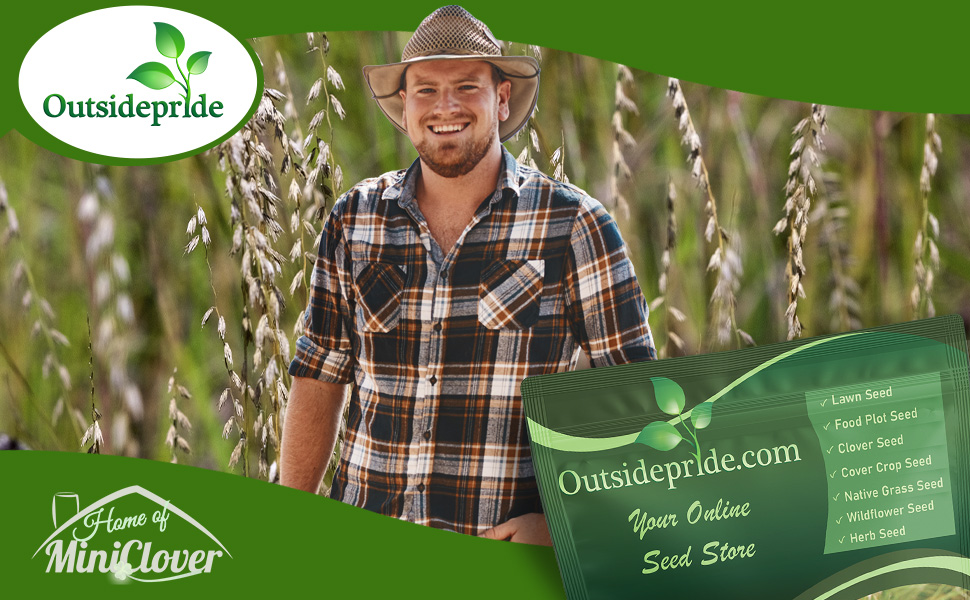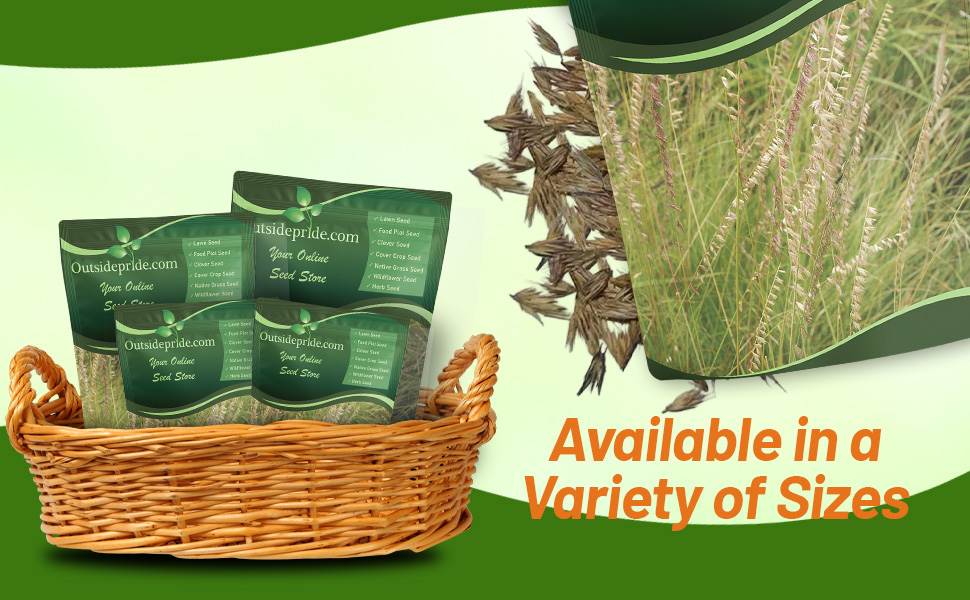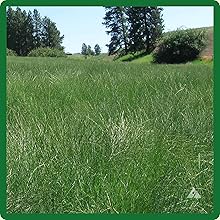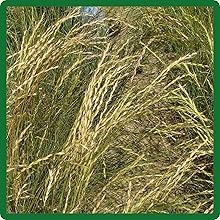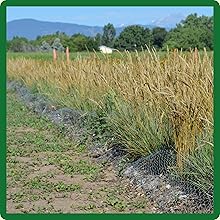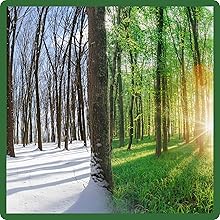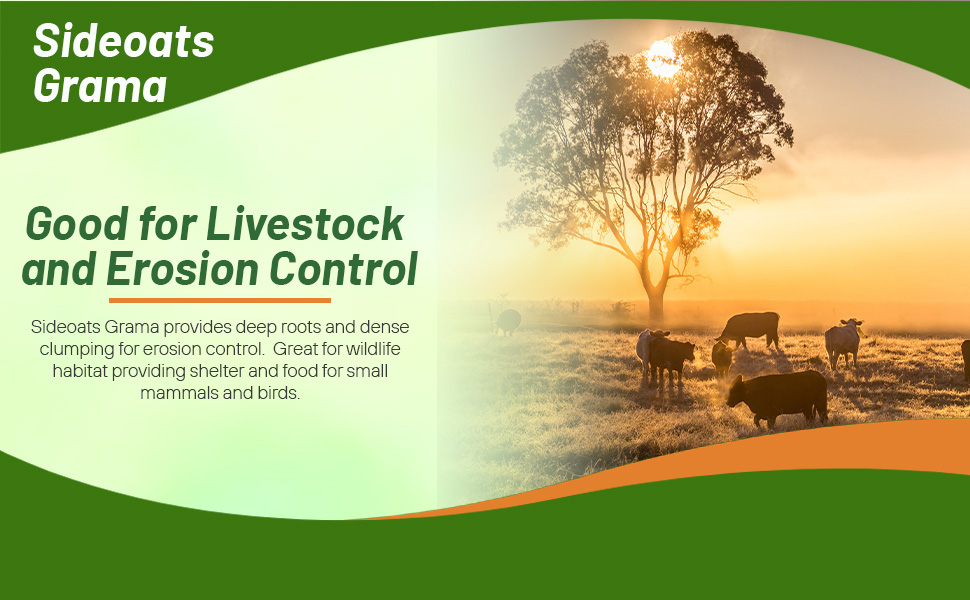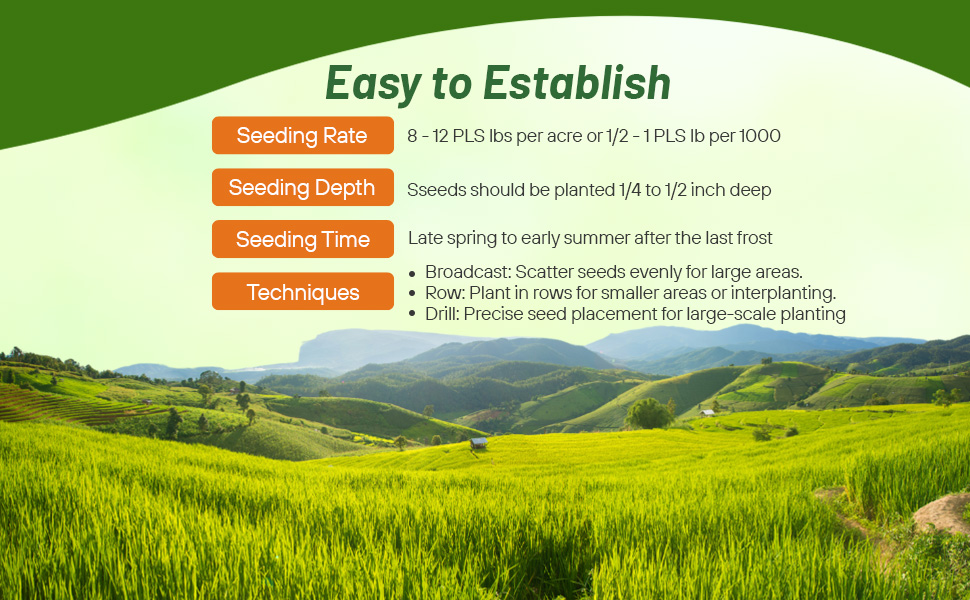Grass Specifications:
Season: Perennial
USDA Zones: 3 - 9
Environment: Full sun
Height: 12 inches

Sideoats Grama (Bouteloua curtipendula) is a long-lived, warm-season, native grass with an exceptionally wide, natural distribution throughout the United States. It is most abundant in the Great Plains. It is the largest species of the grama grasses, reaching up to three feet in height. The color of the grass is bluish-green and cures to a reddish-brown color in the fall. The leaves are fairly coarse and stiff. Blooms occur along one side of the seed stalk and are bright red in color. The mature seeds droop from this one edge, thus attributing to the name.
Sideoats Grama germinates rapidly when conditions are favorable, which is usually a fairly long wet period. However, the seedlings will not develop sufficiently to withstand a significant drought, so early continued moisture is important. Sideoats Grama grows well on mountainous plateaus, rocky slopes and sandy plains. This native grass is also drought and cold tolerant and is hardy in Zones 4-9. It is considered a good foraging grass for livestock and is also good for erosion control.
Sideoats Grama is not as palatable as some of the other short native prairie grass species, but it produces a greater volume of forage, which tends to make up for its lower palatability. It also stays greener longer that other gramas which allows for longer grazing. However, overgrazing is very harmful to the species. Look for best stands of Side-Oats on rocky open slopes, shallow woodlands and forest openings up to an elevation of 7,000 feet.
Our deep-rooted grass provides strong soil stability, making it ideal for lawns and winter pasture seed. It helps reduce runoff and supports wheat seeds for planting and fodder systems. With dense growth, it protects against soil loss, ensuring long-lasting land resilience in diverse climates.
Sideoats Grama thrives in USDA Zones 3 - 9, adapting to cold winters and warm summers for year-round growth. It withstands temperature extremes and requires minimal upkeep, making it ideal for varied climates. With strong resilience, it ensures lush coverage in diverse conditions.
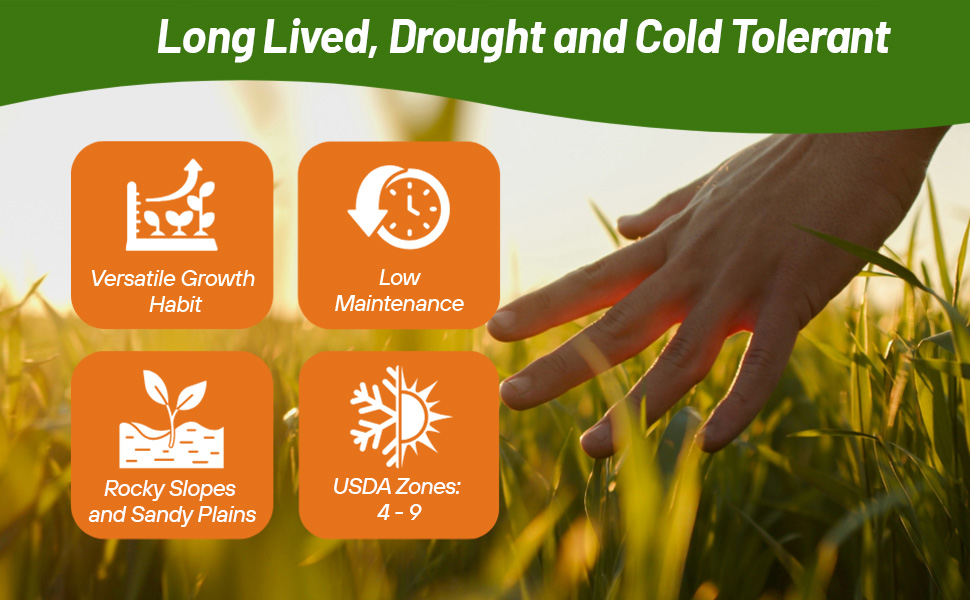
Sideoats Grama thrives in diverse climates, excelling in erosion control, drought tolerance, and fire resistance. With deep roots, it reinforces soil structure, making it ideal for pasture applications, fodder systems, and cover crop seed mix. Its dense growth enhances ground stability, while its hardy nature ensures long-lasting resilience with minimal upkeep. As grass seeds for lawn and sprout seeds, it delivers consistent, reliable coverage in even the most challenging environments.
As a warm-season grass, Sideoats Grama thrives in hot, dry climates and remains resilient even during prolonged droughts. It requires minimal maintenance, adapting well to poor soils without the need for fertilizers. Additionally, its dense roots help prevent soil erosion. Beyond its practicality, Sideoats Grama has appeal with its fine texture and unique seed heads while also supporting pollinators and wildlife.
Our hardy grass is designed for quick growth. With a seeding rate of 8 - 12 PLS lbs per acre or 1/2 - 1 PLS lb per 1000 square feet for lawns or ornamental plantings, it ensures strong germination when spread evenly over a prepared area. A seeding depth of ¼ to ½ inch supports healthy root development, while the recommended planting window is summer which allows for vigorous establishment. it’s a great choice for low-maintenance lawns, pastures, and prairie restoration projects.


Despite the early need for water, developed plants do not handle abundant moisture well and can easily drown out. Their long root system will penetrate deeply into the underlying areas of drier, subsurface soil, which then reduces the plants dependency on the changeable moisture levels of the topsoil. Sideoats grama does not persist on many sites. The roots lessen in number after the first year of growth and the plant will often disappear completely after five years. It does, however, reseed fairly easily if the site is favorable. The best growing sites are those with shallow soil, a fairly low moisture level and good drainage. Because it is so drought tolerant it often becomes abundant following prolonged dry periods which makes it a popular native grass.
Seeding Rate
8 - 12 PLS lbs per acre or 1/2 - 1 PLS lb per 1000 square feet for lawns or ornamental plantings.
PLS pounds - Pure Live Seed, or PLS, is the percentage of viable seed in a given lot. It is calculated by multiplying the purity percentage by the total germination percentage. For example, 95% purity multiplied by 85% total germination equals a 80.75% PLS. This means that out of every bulk pound of that bag of native grass seed that you plant, 80.75% of it is actually seed of that tagged variety and has the potential to germinate. Weights listed are bulk pounds.
